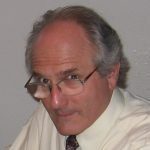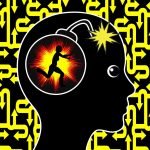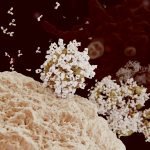JARED L. ZEFF, ND, VNMI, LAC
The following is not an article prepared for a medical journal. Not every statement of fact is cited or referenced. This is a commentary on the medicine, a running set of observations about practice in the field. It’s not meant to be a peer-reviewed presentation; rather, these are notes and thoughts from a practicing naturopathic physician, a primary care doc in general practice.
Finding The Cause (Part III)
In my past 2 submissions, I elaborated on toxemia and its relevance to disease. I discussed how I organize a new patient visit to obtain the information I need and that some of the techniques I use are not generally taught in school. I gave specific explanations of the urinary indican test and the acoustic cardiogram as examples. I also detailed my simple approach to evaluate a patient’s diet and dietary habits. I talked about laboratory tests, how I use them judiciously and selectively, and that I do not do comprehensive labs on all patients. This is because extensive lab work can be expensive for patients and often reveals little of significant value. If they are truly indicated, I will do them when I think they are needed, which is not most of the time. As I outlined, I gather a lot of useful clinical information directly from patients, and I am not limited to using only lab values to determine the best course of treatment.
The other reason I tend to find less of a need for extensive lab work is because I generally do not treat specific diseases, at least not in the conventional sense of determining a diagnosis and then treating that disease. In this, the third and final installment of what “finding the cause” means to me, I want to review 3 other important tools – the Carroll method, pulse diagnosis, and tongue diagnosis. I have found these methods helpful in my work and their application speaks to the usefulness of continuing to explore the nature of “cause” in our profession.
The Carroll Method
Most diseases, as Lindhahr characterized them, are due to a violation of “Nature’s Laws,” which he detailed in the early chapters of his book, Nature Cure.1 This means that, as a vitalist and a naturopathic physician, my task is to explore with my patient the underlying nature of their illness, not to focus solely on their pathological diagnosis. The diagnosis is important, but I am not treating the diagnosis, I am treating the patient. The types of “violations” of natural law Lindlahr referred to were common in his own time, but these are likely even more pronounced in modern society. Principle among them is what the early naturopaths called “wrong diet.” The same naturopaths also searched for the “right diet,” and most looked to vegetarianism and veganism for answers, but these avenues were not always helpful.
For me, the answer to this most fundamental question of “right diet” came after I observed my mentor, Dr Harold Dick, do a dietary assessment on every patient. He was using an old method he learned from his mentor, Otis G. Carroll, who had studied under Lindlahr. Through the application of this method, Dr Dick would determine the primary cause of toxemia in each patient. Eventually, I learned how to do the same for my patients and it became the foundation of my work, particularly for patients with chronic illnesses. Dr Carroll had discovered a way to specifically determine foods that did not digest well. Though there were commonalities, these foods were considered problems for each patient individually, for “constitutional” reasons. Upon their removal, the hydrotherapy treatments employed by Dr Carroll could start to have the desired effects, and even the most difficult patients would begin to heal.
An Interesting Origin
After using the Carroll method myself for many years, and considering it the most important thing I have ever learned in medicine, I wondered how, or where, Dr Carroll had come up with it. Why had I never thought to ask my mentor about it? Unfortunately, Harold had been dead for a number of years by the time I began to wonder about it, and I could no longer ask him. But Ruby, his wife, was alive. She was in her 90s at the time, yet very lucid, and she had been intimately involved in Dr Dick’s practice. The next time I visited Spokane, I asked her my question. She then proceeded to tell me the most remarkable story.
Ruby began, somewhat casually, by saying, “There was this Serbian guy, Nicholas Tesla, who was in Spokane to work on a project. He was staying at old Doc Carroll’s clinic, probably being treated for something. He stayed there 2 weeks, and when he left, the old doc was doing this dietary work.”
“Nicola Tesla!” I exclaimed.
“Yes, Nicholas Tesla, a Serbian,” she confirmed.
“Carroll learned this method from Tesla?” I asked again.
“Yes, when he stayed with the old doc at this clinic” she replied.
I was rather flabbergasted by this revelation. I have been unable to confirm Ruby’s story. I have looked into the archives of the Spokane newspaper to see if I could find some evidence that Tesla was visiting Spokane in the early 1920s but have not found anything. Ruby did remember incredible details about so many things; however, and I cannot think of a reason for her to be mistaken.
So, perhaps Carroll’s method of dietary analysis was obtained from one of the true geniuses of the 20th century. Perhaps someday I will learn more about exactly how it happened. Regardless, I have found Carroll’s method of the greatest significance in my work and do it with all of my new patients. For any readers that may also be interested to learn more, contact the Carroll Institute. Their website can be found at www.thecarrolinstitute.org. This valuable method has been a part of our profession for about 100 years, and in Washington State, it falls under the official category of “traditional naturopathic diagnostic techniques.”
Dr. Carroll’s Son
One other story about Dr Carroll that I have always appreciated was how he used his method for dietary analysis to help his son. As the story goes, at least as I was told it, Carroll was very famous, and his clinic was very famous. He employed 22 nurses to administer hydrotherapy and other treatments. People came from all over to be treated by Dr Carroll. His son was chronically ill, and for some reason, did not respond to Dr Carroll’s treatments. He had put his son on a strict vegetarian diet and applied hydrotherapy, but his son failed to recover. Then, after applying his new method of dietary evaluation, he discovered that his son had an issue digesting fruit. After eliminating fruit from his diet, Dr Carroll’s son began to recover. The other treatments finally began working. Since the vegetarian diet had included fruit, it finally made sense why he had not responded before. The key was to discern the presence of the fruit intolerance causing toxemia in his son. Once the fruit was removed, the vis was no longer disturbed, and his son could recover. In a sense, the “cause” of his son’s chronic illness was fruit!
Pulse Diagnosis
Pulse diagnosis is not strictly limited to traditional Chinese medicine. Most, if not all medical cultures of which we have a record utilized pulse diagnosis. Historically, these include Egyptian, Mesopotamian, Chinese, Indian, Persian, Greek, Roman, European, and American (until about the 20th century) physicians. Although the pulse is interpreted through the medical culture of the various places it was used (eg, the Yin, Yang, and 5 Elements of Chinese medicine, the tridosha of Ayurvedic medicine, etc), its interpretation is essentially universal. One can picture the pulse map as a homunculus (see Figure 1). The “upper” (distal) pulse, as in the picture, represents the upper body – the heart, lungs, and head. The “middle” pulse represents the middle body – the digestive system and liver. The “lower” (proximal) pulse represents the lower body – the kidneys and genitourinary system. This is a simplified explanation for the purposes of this article. A book could be written (and many have been) on the subject. One such book I would suggest is The Pulse in Occident and Orient by Reuben Amber and A. M. Babey-Brooke.2 Though it is more historical than clinical, the book offers great insight into the intricacies of pulse diagnosis.

Practice, Practice, Practice
Try this out – reach your right hand around behind your left wrist, then curl your fingers around so that the pad of your right index finger rests on the upper pulse, your middle finger rests on the middle pulse, and your ring finger rests on the lower pulse of your left hand. Just feel it for a minute. A normal, healthy pulse is “rounded” and somewhat “firm,” kind of like a grape or a soft rubber ball in texture. It should feel smooth and regular. If it is “sharp” or “peaked,” it denotes a disturbance. A pulse can also be characterized as “deficient” or “excessive” depending on its feel. These descriptions mean little until you have felt a few. If you do not do this yet, start feeling the pulses of your patients. You will soon understand what types of pulses are associated with different pathologies. The value of this is that one can determine fairly quickly where in the body a patient’s health may be disturbed (eg, the heart, liver, stomach, etc).
I initially assess and record the pulses of all my patients. I begin most new patients with a dietary recommendation, a simple bitters tonic for the stomach, and probably some constitutional hydrotherapy treatments. I expect them to improve over the first month. Often, when they return a month later, as I re-check the pulse, I find that the stomach pulse is smoother. They are feeling better. Their digestion has improved. So, when they return 2 months later and are complaining that their fatigue, migraine headaches, or other complaints have returned, I feel their pulse again. I note disturbance in the stomach. I know it is disordered again, probably from dietary error. I inquire about this and discover that they have “violated” the dietary advice I had given, either consciously or otherwise. I can then redirect my efforts (and theirs) to dietary improvement, accompanied by an explanation of why their symptoms have returned. Pulse diagnosis gives me a rapid, reliable assessment of what is going on internally for the patient. It is important to note that pulse characteristics can be distorted by drugs, but they do not lie. Over time, the more pulses I have felt, the more information I have been able to obtain from them. For a vitalist physician, pulse diagnosis is a valuable, reliable, inexpensive, and readily available assessment tool.
Tongue Diagnosis
One final tool I use, in addition to the Carroll method and pulse diagnosis, is to look at the tongue of each patient I see. The tongue is also an ancient and reliable guide. Similar to practicing pulse diagnosis, I recommend observing as many tongues as possible. Practicing this observation can help one to better understand how to interpret changes that coincide with disturbances in health. A normal tongue is pink, has a slight white coat, is moist, and is not scalloped. There are a number of deviations from normal – in color, coat, texture, moisture, and architecture. Each feature reveals something about the internal condition of the patient. The tongue is an internal organ, one of the few we can visualize without other equipment, and it can be very helpful in directing or confirming other diagnostic approaches, as well as monitoring the progress of treatment.
Final Thoughts
In this series of 3 articles, I have begun an exploration of why people get sick. I discussed how I consider the cause of illness, rather than specific pathology, and more specifically, how I go about seeking the underlying disturbances to health. I laid out the methods I use to discern the cause and the extent of illness in my patients. I reviewed Lindlahr’s characterization of causation, the concept and relevance of toxemia, and several of the unconventional tools I have found useful in my work. Lindlahr tells us that it is the violation of nature’s laws that cause disease. I discover these violations through the methods I have shared, advise on or assist in their correction, and expect the vis to restore health to my patients. I am profoundly grateful to have learned this way of healing from my teachers. It is remarkably effective, deeply satisfying work, and it is why I practice vitalistic naturopathic medicine.
Respectfully,
Jared L. Zeff, ND, VNMI, LAc
References
- Lindlahr H. Nature Cure. Chicago, IL: Nature Cure Publishing Company; 1913.
- Amber R, Babey-Brooke AM. The pulse in Occident and Orient. New York, NY: Aurora; 1986.

Jared L. Zeff, ND, VNMI, LAc is a licensed doctor of naturopathic medicine and a licensed acupuncturist. In addition to functioning as Medical Director at the Salmon Creek Naturopathic Clinic in Vancouver, WA, Dr Zeff taught on the faculty at National University of Natural Medicine in Portland, OR, where he was also Dean from 1988 to 1993, and holds a professorship in Naturopathic Medicine. Dr Zeff is a graduate of the University of California, NCNM, and the Emperor’s College of Traditional Oriental Medicine. He, along with Pamela Snider, is the author of the AANP’s Definition of Naturopathic Medicine, and the Therapeutic Order concept.





